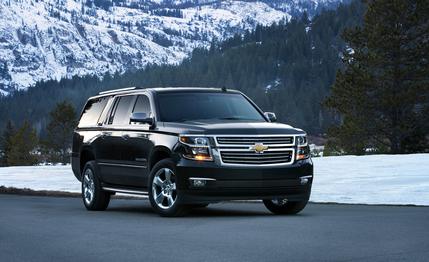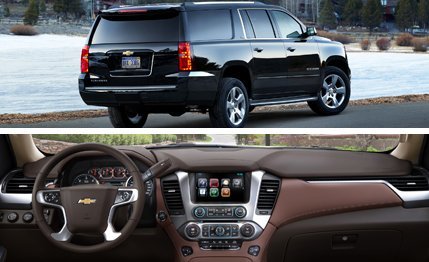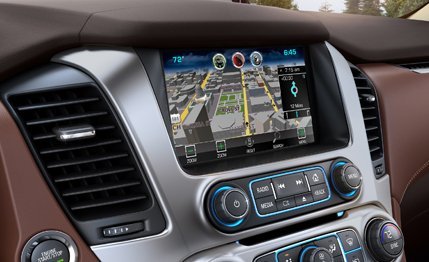 First Drive Review
First Drive Review
Pop quiz: What’s the oldest vehicle nameplate in America? If you know that distinction belongs to the Chevrolet Suburban, which has been in continual production since 1935, award yourself a cookie. (From your own cupboard. We’re eating ours.) And as you read this, the 2015 Suburban—the 12th generation—is arriving in dealerships.
Unsurprisingly given its longevity, the Suburban has a loyal base of owners who value large carrying capacity, serious—8000-plus pound—towing capability, and the butch appeal of a truck-based mechanical layout. So there are no major upheavals with the new model, even though the last new Suburban was introduced back in 2005. Instead, the focus of the 2015 model was to perform its traditional tasks with more style, greater comfort, and better efficiency.
Charting the Changes
The ’Burban is still basically a big box, but the 2015 is more chiseled and interesting to look at. There’s a strong character line running down the body side just below the beltline, a slightly higher hood, and a flatter and more raked windshield. New headlamps employ projector beams, and LED illumination provides signature lighting at both ends. Overall, the new model is about two inches longer, two inches lower, and about an inch wider than its predecessor.

Inside, the previous model’s flat, clifflike dashboard has been replaced by a far more sculpted design, with an eight-inch LCD touch screen mounted much higher in the dash for easier viewing. The infotainment controls are clearly grouped below the screen, with the HVAC controls below that. When you order the navigation system, you get greater functionality with more extensive voice activation. We found it to work well during the press introduction.
Much richer materials are used inside, including soft plastic, and there are yards of French stitching in the upper trim levels. There’s plenty of storage, including two mid-level bins in the front doors and a truly cavernous central bin below the armrest that has lips for hanging file folders. The glove box is surprisingly small, however, so we hope you have small hands.

You can now get a power-tilting-and-telescoping steering wheel in addition to the familiar power-adjustable pedals, so there’s no excuse for not finding a good driving position. Front head- and legroom are increased by meaningful amounts, along with fractional increases in the second- and third-row seating space. More important, the second- and third-row seats now fold to produce a flat—although slightly rising—surface. On the upper trim levels, the third-row seat folds and unfolds with a switch just inside the luggage compartment; the second row flips down and then forward via the press of a button—although you must manually unfold those seats.
The downside of this arrangement is a six-inch-thick shelf added to the cargo floor, raising the lift-over height and reducing the cargo capacity. With everything folded, cargo volume drops from 137 cubic feet in the old Suburban—with the third row completely removed—to 121. Behind the third row, the volume is now 39 cubic feet, down from about 46 before.